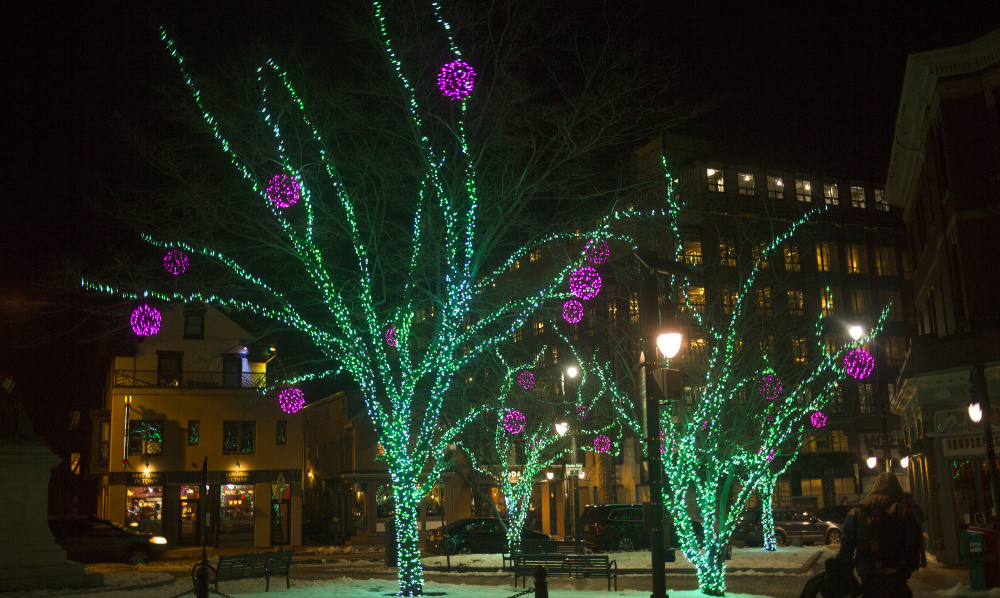A walk through any town in America should put the lie to an imagined war on Christmas, a notion that gets traction in the slow news weeks at the close of the year.
Despite constitutional restraints on religious statements by government entities, lights and decorations flow seamlessly from private to public property, which shows that this is a holiday that is heartily celebrated by Christians, devout and not so devout, as well as people of other faiths and nonbelievers by the hundreds of millions.
Which is how it should be. Christmas, as it’s celebrated here, has become a particularly American holiday, like Thanksgiving and the 4th of July. We have melded traditions from all over the world, creating a holiday that is wholly ours and open to anyone who wants to participate.
For many, Christmas is the Feast of the Nativity, marking the birth of Jesus the Christ, the son of God, who came to the world to offer everlasting life to all who follow him.
It’s a holiday that has been celebrated for 20 centuries by believing Christians, but the way it is observed today by millions and millions of others has only a passing reference to certain events in the Near East at the start of the first millennium.
Some American Christmas customs do have a religious root, like the exchange of gifts the way the wise men were said to bring the baby Jesus gold, frankincense and myrrh.
But other traditions come from pre-Christian Rome, where the winter holiday Saturnalia featured hanging ornaments and fertility rites like kissing (and more than just kissing) under mistletoe.
Placing outdoor lights in winter was another Roman tradition around the feast of Sol Invictus.
Decorated trees and greenery were absorbed into the Christian holiday celebration as people who enjoyed them converted.
The Christmas tree remained a German tradition until the mid 19th century, when Britain’s Queen Victoria adopted it. Decorating a tree didn’t become popular among non-German Americans until decades later.
Nothing has a more complicated history, or is more American, than Santa Claus.
What started as St. Nicholas, the real third-century bishop famous for his generosity in what is now Turkey, somehow turned into Sinterclaas, who arrives in Holland every December on a boat from Spain.
He is said to ride a white horse and deliver oranges to good boys and girls. Bad children are likely to get a whack from his rod.
And this has become our jolly old elf in a red-and-white suit who lives in the North Pole and flies around the world with a sleigh full of toys. He is as American as Paul Bunyan and John Henry. He comes from many sources and he belongs to everyone.
Which is what makes the celebration this time of year so rich. Rather than a war against Christmas, we see a war for Christmas, which can understandably make people who choose not to take part feel overwhelmed. There is just so much Christmas in so many forms that it there is really something for everyone, even if it’s a just a pretty colored light, or a few bars of a familiar tune.
This is one of the great good things about living in the United States, where all the world’s civilizations have come together and built a unique culture that excludes no one.
Regardless of how you celebrate, this holiday is a reminder of the benefits that come from being generous and welcoming, because, in the end, it really is better to give than to receive.
Send questions/comments to the editors.



Success. Please wait for the page to reload. If the page does not reload within 5 seconds, please refresh the page.
Enter your email and password to access comments.
Hi, to comment on stories you must . This profile is in addition to your subscription and website login.
Already have a commenting profile? .
Invalid username/password.
Please check your email to confirm and complete your registration.
Only subscribers are eligible to post comments. Please subscribe or login first for digital access. Here’s why.
Use the form below to reset your password. When you've submitted your account email, we will send an email with a reset code.